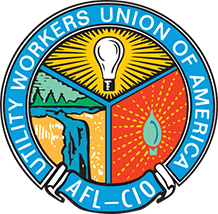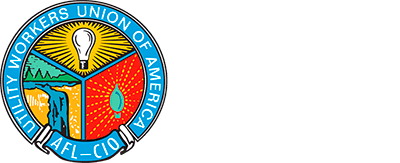In response to the death of George Floyd at the hands of Minneapolis Police, the resulting protests and the national discussion on race, the UWUA hosted two virtual Townhall meetings. Entitled, “A Conversation on Solidarity, Equality and Justice,” race and racism were discussed by a panel that included UWUA President James Slevin, representatives from the Human Rights and Women’s Committees, executive board and staff members. These conversations represent just one of the union’s efforts to be on the right side of history.
Colin Kaepernick takes a knee
In 2016, NFL player, Colin Kaepernick began protesting police brutality against Black Americans during the national anthem prior to his NFL games. I was surprised that so many were offended by what was perceived as disrespecting the flag. I never viewed kneeling as disrespectful, I have always seen it as respectful.
However, in an attempt to better understand the issue and Kaepernick’s intent, I did a little investigation. I did not realize that Kaepernick began his protest by simply remaining seated on the bench during the anthem. At those games where Kaepernick was seated, very few took note of his protest. However, someone who did notice was Nate Boyer, a former Army Special Forces member.
Boyer met with Kaepernick and advised him that kneeling during the national anthem would be a more respectful protest than remaining seated on the bench. As Boyer has said since, “In my opinion, and in my experience, kneeling has never been in our history seen as a disrespectful act. I mean, people kneel when getting knighted, you kneel to propose to your wife, and you kneel to pray. Soldiers often take a knee in front of a fallen brother’s grave to pay respect. So, I thought, if anything, besides standing, that was the most respectful. I just couldn’t think in any way that it could be construed as disrespectful.”
The killing of George Floyd
Fast forward to today, where protests sparked by the killing of George Floyd, but also raising up the deaths of Black Americans like Eric Garner, Tamir Rice, Ahmaud Arbery, and Breonna Taylor, just to name a few, are actually an extension of the very protest Kaepernick started.
Like Kaepernick’s protest, these demonstrations are being misrepresented to be about rioting and destruction of property, rather than the real issue of police violence against Black Americans. It is time to stop placing blame on those exercising their rights as Americans by protesting to demand change and to start examining why they are protesting.
I know many will say that protesting is fine but when it devolves into rioting and the destruction of property it has gone too far. I cannot help but wonder what the British said when protesting about taxation without representation advanced into rioting and the destruction of property. Oh, that’s right, they put troops in the street and established curfews and essentially martial law. Sound familiar?
Contrast the protests against police violence to those protesting the actions taken by governors in an attempt to slow the spread of COVID-19. In Michigan, protestors, most of who just happen to be white, occupied the State Capitol while fully armed, with legal weapons, body armor and dressed in fatigues. These protests resulted in no police violence and no use of tear gas. I cannot help but wonder what would happen if a Black man showed up at the State Capitol to protest police violence while carrying the same weapons, dressed in fatigues and body armor?
The answer to that question defines the Black Lives Matter movement. This is another movement that is purposely being misrepresented to say Black lives matter more than others, often responded to with “all lives matter.” All lives matter is exactly the point; however, until Black lives fit into all lives matter there will continue to be a need to say Black Lives Matter. It is possible to believe that Black lives matter and at the same time believe that all lives matter, but it is not possible to believe that all lives matter and not believe that Black Lives Matter.
Defending the right to peaceful protest
I grew up with police officers very close to my family and to this day have close friends who are police officers. The police that I have experience with are great people and a credit to the profession. I want to be very clear; I believe the vast majority of police are good, just as the vast majority of protestors. In both cases we cannot let a few bad apples spoil the whole bunch. It is possible to support police and still oppose police violence. It is possible to support protest and still oppose rioting and property destruction. And it is possible to do both at the same time.
These attacks on the right to protest, picket and assemble also directly affect our rights as union members to do the same. History is filled with instances where striking workers, including UWUA members, faced opposition and even violence from the police. A recent example was when thousands of union members were in Lansing, Michigan in 2012 to protest so-called “right-to-work” legislation and the state police, in conjunction with local police forces, shutdown the State Capitol to keep us out. Contrast that with recent incidents where the very same police stood aside and allowed armed protesters into the gallery of the Capitol chambers.
You might ask why this is the UWUA’s fight, why is this our fight, why is this my fight? This fight is the same fight that unions have been fighting for their entire existence, fighting for those who are not able to fight on their own and standing up for solidarity, equality and justice. From my platform, I could have written any number of articles that would be innocuous and far less controversial; however, I will not let my time in this position pass without effort to ensure we are on the right side of history. Black Lives Matter.

